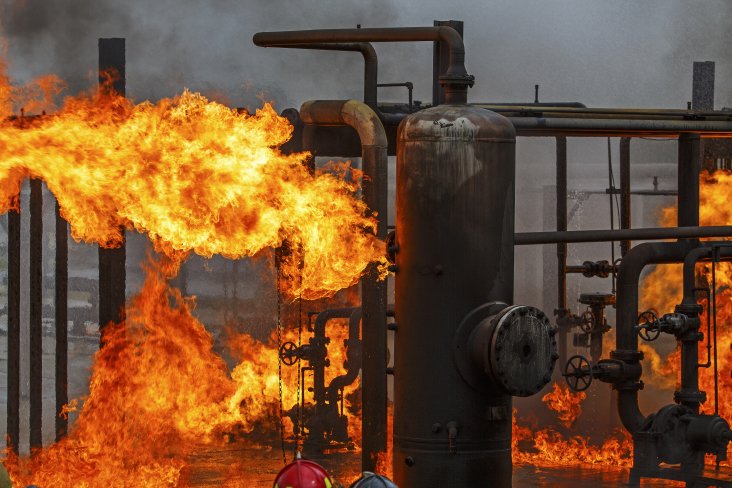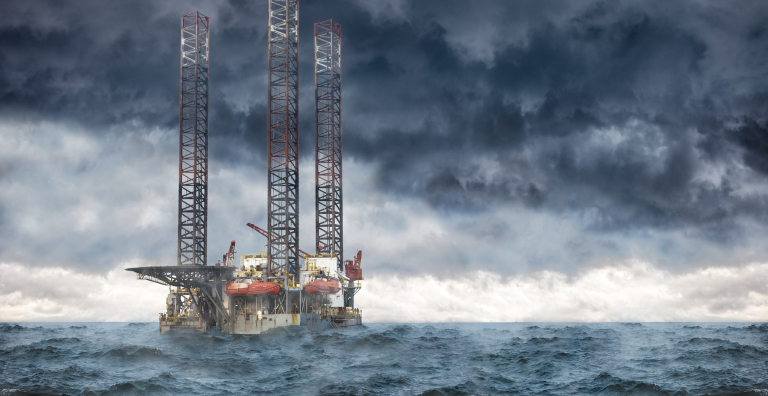RFID Can Tackle Most Harsh Environments
HID RFID tags are the most rugged tags in the industry. Simply put, we offer the largest selection of industrial RFID tags and visual tag solutions available.
But more importantly, we work closely with our clients in various industries throughout the world (in 67 countries on six continents) and have been a major provider of RFID in harsh environments for many years. Through our experience we know what works and what doesn’t. Even as opportunities are increasing, compliance requirements, capital investments and global competition continue to pressure your margins, and processes must be leaner. There’s just no room for downtime.
Recently, we published a customer success story on how digital automation using RFID is transforming the business of extraction which is one example of our capabilities and how RFID technology can help you manage your assets from beginning to end. Read the story now.
While every RFID solution is unique and involves specific requirements, here are a few highlights of the best practices for using RFID tags in the top 10 applications in harsh environments:
1. RFID for Yard Management in Rugged Environments
HID RFID tags can help you identify and locate 100,000 or more assets — even across an industrial yard spanning several square miles — so you can more efficiently manage your operations, inventory tracking, forecasting and compliance. But to count the many, or locate the one, make sure your RFID tags meet the specific demands of your environment — whether you’re dealing with sub-zero temperatures or sweltering heat, exposure to seawater or extreme sunlight, challenging terrain or physical obstructions, among other factors.
2. RFID for High-Impact Environments
We thoroughly test our RFID tags in real-world situations and extreme conditions. So yes, we’ve made the “sledgehammer-proof” RFID tag (or as our engineers like to say, a tag that has been rigorously compression-, torque-, and crush-tested). As a best practice, make sure your RFID tags are tough enough to withstand whatever the weather — or drilling pipes, shipping containers, operators or other heavy objects — may throw at them.
We hit the tag with a sledgehammer multiple times, and it’s survived countless hours of rigid testing. – Kathy Gannon, HID Industry Expert
3. RFID in Explosive Environments
When munitions or other kinds of explosives are involved, make sure your RFID solutions are certified (ATEX, C1D1, C1D2, and IECEx). Also ensure that you can specifically customize your passive RFID or active RFID tags with static-discharge coatings, for example, to meet (or in this case, very much exceed) your specific safety requirements. When it comes to using RFID tags around explosives, don’t be shy about asking for certification, compliance materials and test data.

4. RFID for High-Temperature Environments
We’ve done a lot of testing with our high-temperature RFID tags — freezing them, then heating them up to 225°C (437°F), and then repeating the process over and over again. But every RFID application is unique, like applying RIFD tags on the automotive assembly line while the paint is baked on. So make sure that your high-temperature tags (and their specific shape, size, coatings and adhesives) have been thoroughly tested for the high temperatures and extreme heat involved in your particular application.
5. RFID Tags for Cylinders, Pipes and Pipelines
These applications often involve harsh conditions, high temperatures or explosive environments, which present their own unique challenges. They include active RFID applications used by utility providers and our other clients in the energy industry. For the utmost safety and reliability in pipes, casings, drill collars, underground lines or similar equipment, make sure your RFID tags fit — and can withstand the heat, friction and other harsh elements involved.
6. High-Memory RFID
Sometimes an RFID tag must do more than just identify or locate an asset. So when using RFID tags to encode more data, make sure you choose the right kind of high-memory RFID tag — with the right amount of memory, to cost-effectively store the asset data you need — whether you’re using RFID tags for IT asset management, military transport vehicles, retail supply chain management or other applications, like transforming paper labeled boxes into smart containers.
7. RFID in “Noisy” High-Interference Environments
WiFi, handheld radios and even the microwave in the breakroom — all of these things can interfere with RFID applications, regardless of whether active or passive RFID tags are involved. That’s why it’s important to thoroughly test your RFID tags in real-world situations: across the entire industrial or construction yard, or throughout a sprawling 2.4 million square-foot manufacturing facility, and especially in areas with excessive signal noise and signal interference — even at lunch time.
8. RFID in Environments With Chemical Exposure
Getting the right kind of RFID tag, with the right materials, coatings and adhesives is critical for deploying tags in environments involving chemical exposure. Moreover, it’s critical that your RFID tags can withstand not only individual chemicals — but also the potential chemical combinations — whether it be just a splash, repeated exposures, or submersion, again and again. And when using RFID tags for instruments at medical facilities, for example, it’s also critical to consider contamination factors.
9. RFID for Anti-Counterfeit and Anti-Tampering
Sometimes harsh environments have nothing to do with snow, rain or heat. The retail, manufacturing, logistics and transport industries are harsh enough — especially when it comes to verifying that your goods and materials are authentic, and preventing them from being tampered with, physically or digitally. When dealing with counterfeiting and tampering, it’s best that your RFID tags can prevent or identify tampering with the tag itself — and also protect the tag’s data with proper encryption, no matter where your goods, supplies and merchandise may be in service or in the supply chain.
10. RFID Infrastructure and Putting It All Together
So when it comes to the big picture, and using RFID in harsh environments, it’s more than just getting the right kind of tag on the right frequencies. Make sure your RFID tags have been thoroughly tested to meet your specific conditions. And don’t be satisfied with an RFID tag that can’t stand up to your worst-case scenarios, especially in harsh environments. Even the best passive or active RFID tags won’t matter, if you don’t have the right RFID tag readers — whether manual, automatic or mounted on a drone (yeah, we’ve done that). Ultimately, you want a proven RFID strategy — with the right RFID tags and labels, tag readers, software, infrastructure and RFID technology all in synch — especially when deploying in harsh environments.
We’re here to help you identify RFID requirements, conduct real-world tests and implement the right strategy and infrastructure. Check out our RFID webinar to learn more.
For a deeper dive into HID’s RFID tags with industry certifications to operate in harsh environments, check out our white paper: The Four Most Important Certifications for Rugged RFID Tags.
David Owen is an integrated Marketing Manager and brand builder with both professional agency and client-side experience. His client-side experience has included the Commercial Property sector with Vail Williams LLP and before that was in the conference, meeting, events and golf industry. In 2019, David joined Omni-ID (now an HID Global company). David and his family reside in the quiet countryside of Surrey England, where he likes to enjoy a round of golf.
